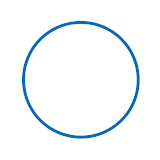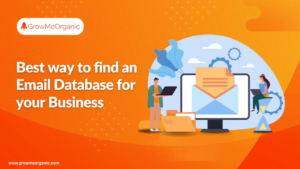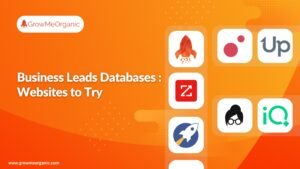The Internet of Things (IoT) is a network of computing devices, mechanical and digital machinery, items, or people linked together and have unique identifiers (UIDs) and the ability to communicate real-time data without requiring human-to-human or human-to-computer interaction.
Companies across industries are increasingly turning to IoT development to improve operational efficiency, better understand customers, provide better customer service, improve decision-making, and raise the value of their businesses.
An IoT ecosystem comprises web-enabled intelligent devices that use embedded systems such as CPUs, sensors, and communication gear to acquire, send, and act on data from their surroundings. Sensor data from IoT devices can be sent to the cloud for analysis or processed locally by connecting to an IoT access point or another edge device.
These devices may occasionally communicate with one another and act on the information they receive. People can engage with the instruments to set them up, give them instructions, or retrieve data. Still, gadgets handle the majority of the work.
IoT technology has enormous potential in Dubai. An IoT Development Company in Dubai can help make data collection processes more accessible and dynamic by integrating artificial intelligence (AI) and machine learning (ML).
Software For IoT Development
Quality IoT app development frameworks or procedures are essential if reliable IoT apps are built and released to the market for comfort and problem-solving. Developers must have hands-on experience building IoT applications, from selecting suitable cloud systems and coding languages to defining IoT architectural settings.
Many developers are already outpacing the competition by upskilling to remain relevant and future-proof their professions. Suppose you’re a developer looking to enter the IoT application development services. In that case, you must be familiar with a few coding languages.
Java
Java is the most widely used programming language for IoT app development. In 2019, it was the most popular programming language, with a 16.61 percent aggregate rating. The programming language alone has powered nearly three billion gadgets.
One of the primary reasons for Java’s appeal is its ability to run code once and anywhere. This means that programmers may write once and have their software run on any device that supports the programming language (from cell phones to the simplest wearable devices) providing robust Java Development Services.
For Java enthusiasts looking to delve into IoT app development, exploring the intricacies of web scraping is a beneficial skill due to its significant role in data-gathering processes. Such skills complement IoT development by providing means to extract and analyze real-time data extensively used in IoT devices. To grasp this valuable technique, the web scraping with Java guide offers comprehensive insights for efficiently harvesting web data using Java, thereby enhancing your IoT projects.
Furthermore, Java is object-oriented and may be used for developing cloud and edge node JS software. Because of its interoperable functionalities and extensive library, Java is an ideal programming language for IoT development services.
Python
Python is another popular programming language for IoT device development because of its simple syntax and code comprehension. Because it is an interpreted language, it is compatible with object-oriented, structured, and functional programming.
Python can be used with other programming languages, such as Java and C++, and it is available on various platforms, such as Linux and Windows. Thanks to its vast library and strong community support, Python is a developer’s dream. Python is ideal for IoT software development tasks requiring extensive data analysis.
Lua
Isn’t Lua on this list the programming language you expected to see? Nonetheless, it is unavoidable in the sector because of the qualities and capabilities it provides for the entire IoT ecosystem.
For the uninitiated, Lua is a high-level, general-purpose programming language. Its primary function is to serve the embedded software system market. This signifies that host clients can use only the programming language.
One of the most significant features of Lua is its frameworks, such as Node. Developers can use this framework to construct IoT-centric apps and incorporate IoT-centric capabilities into systems. This includes, among other things, portability, battery efficiency, and data management.
What Skills Are Required for IoT Development?
Internet of Things professionals use IoT abilities to build and monitor devices such as mobile phones. Professionals in this industry use a variety of skills while connecting physical objects to the internet. Cloud technologies, for example, might be utilized to share sensor data when building a self-driving car. Six examples of IoT skills are provided below:
✅ Artificial Intelligence and Machine Learning:- Machine learning and artificial intelligence technologies are used by an AI Development Company in Dubai in the IoT business to aid in decision-making.
This capacity helps them recognize patterns and structures in sensor data. Artificial intelligence can assist them in making their data processing more effective and productive. With the help of AI development companies in Dubai, businesses can leverage these advanced technologies to extract valuable insights from their data and improve their operations.
✅ Scripting Languages:- Understanding prevalent coding languages in the IoT (Internet of Things) business can be advantageous. Specialists routinely program IoT devices to construct secure systems with error-free code. Some popular languages to learn are as follows:
- JavaScript
- Python
- C
- C++
✅ Node.JS Development:- Node.JS, a popular open-source runtime environment for developers, can’t help IoT professionals link devices and create IoT apps. They can use Node.JS to communicate with software development tools and microcontrollers. Engineers with this competence can manage various activities using the input and output paradigm.
✅ Cloud Computing:- IoT workers use cloud services to manage the large amounts of real-time data their devices generate. These experts can use cloud computing to store surplus data from their devices, such as servers and databases. They achieve this by connecting to a network over the internet.
✅ Information Safety:- Information security is essential for IoT specialists since it can help them avoid online risks. These individuals can secure their IoT devices by learning about potential security flaws and best practices.
Understanding how to conduct a risk analysis of potential threats is critical to building a secure infrastructure.
✅ User Interface and User Experience Design:- When developing new devices, those in the IoT industry ensure they have proper user interfaces (UI) and user experiences (UX). This entails creating a responsive design and including user-friendly features. Understanding both types of plans can help them produce consumer goods.
IoT Application Development Services Considerations
Manufacturers who wish to remain competitive in their industry must connect their intelligent gadgets to the Internet of Things (Internet of Things). When IoT capabilities are enabled, consumers benefit from additional functionalities.
It also enables the manufacturer to stay in touch with their consumers while learning about new product applications and use cases, which can lead to new revenue streams. While creating your first IoT device, keep the following ten factors in mind:
- Cost: Although more expensive, “smart” or “Internet of Things” goods benefit consumers and producers. Because Ethernet and wireless technology have fallen below $10, networking should be incorporated into your next IoT project.
- Network: The network technology in your IoT product has distance and gateway/router difficulties. You’ll need Ethernet/Wi-Fi to connect to the internet; if you’re in a room or building, you can use ZigBee, Z-Wave, or Bluetooth. Note that the FCC must approve all wireless technologies.
- Features: With an IoT-connected product, businesses may now add capabilities to their IoT projects/products that were previously inconceivable. These features enable you to immediately contact your customers for updates, maintenance, and new revenue opportunities.
- User Interface: Evaluating how a user interacts with a product is critical. Will the Internet of Things project include buttons, LEDs, or a display? In addition, what types of web applications and mobile app interfaces would you provide?
- Power: One of the most critical factors should be the power source. If batteries power the device, all design decisions must consider power saving. Many networking technologies do not work well with battery power. Communication frequency influences power considerations as well.
- Size: Size is everything. Evaluate how the network will affect the device’s size. Specific networks will necessitate connectors and antennae, increasing the size.
- Antenna: Antennas are utilized in all wireless networks, whether inside or external to the product. It is usual practice to move the antenna within a plastic housing. All-metal enclosures would need the use of external antennas.
- Cloud Applications: Cloud applications provide a graphical user interface for objects and IoT data. There are two kinds of clouds: private clouds and public clouds. Most clouds include a standard API for constructing an IoT application.
- Interoperability: Does your IoT solution need to interface with those of other vendors? If so, you’ll need to connect with other devices using a standard set of protocols, such as Apple’s HomeKit.
- Security: Because security is becoming increasingly important, you should include as many layers of security as possible. SSL and a password are essentially the minimum.
Also Read: 20 Best Email Outreach Tools to Boost Your Email Marketing Results
The Last Wise Words
The Internet of Things benefits businesses, consumers, and governments (IoT). Intelligent speakers, machine learning, and 5G are new tools and technologies that significantly improve efficiency and control at home and work.
The ongoing expansion of the IoT industry will have a revolutionary impact on all businesses. The IoT market is predicted to grow to over $3 trillion annually by merging all everyday items with an internet connection.
About Post Author
Anant Gupta
Growth Hacker, Marketing Automation Enthusiast & Founder of GrowMeOrganic























